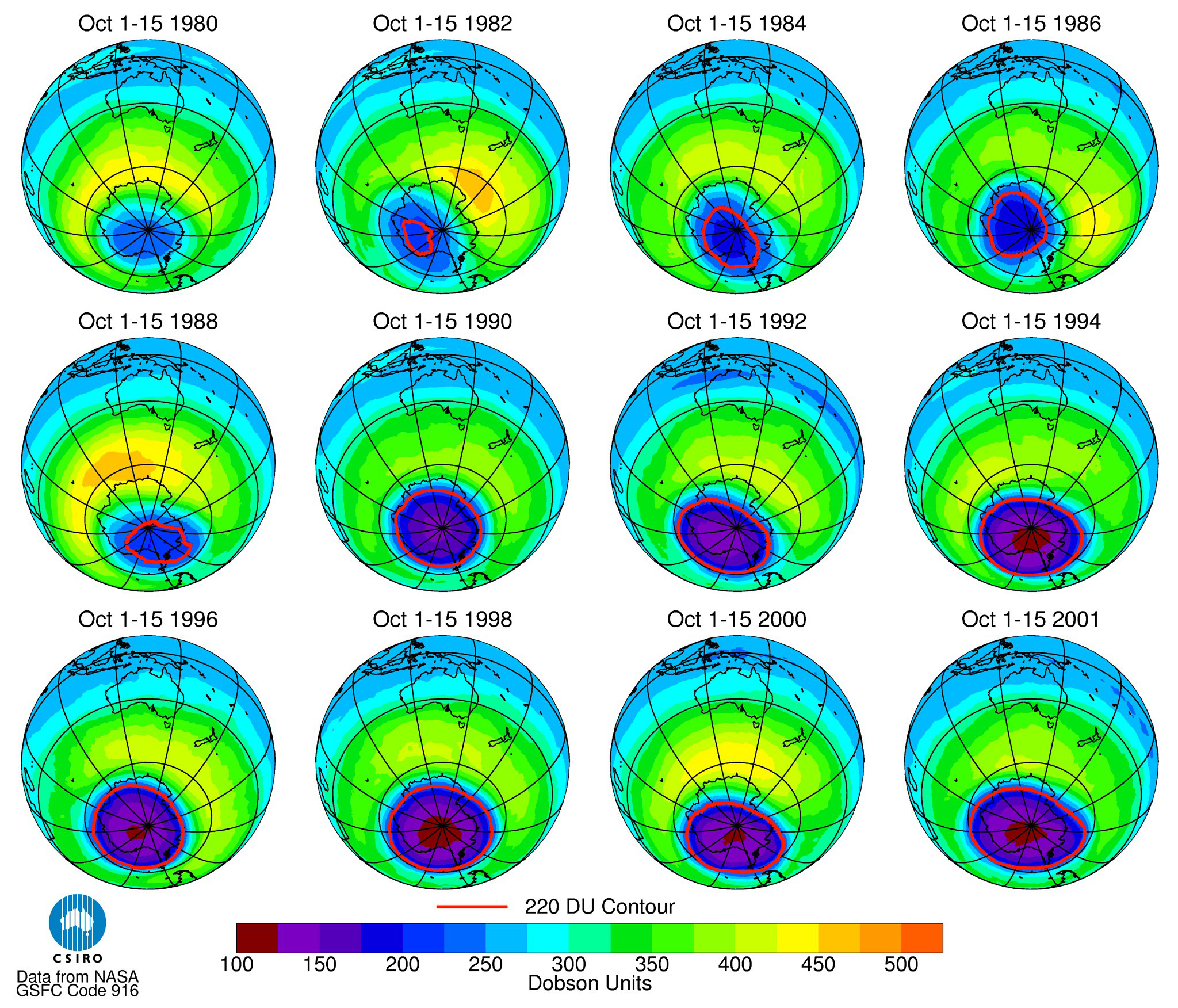The ozone layer, which protects life on Earth from lethal solar radiation, is on track to recover within decades, but controversial geoengineering schemes to combat global warming could reverse that progress, according to a major scientific assessment released Monday.
What is the Ozone Layer?
The ozone layer, also known as the ozone shield, is a region of the Earth’s stratosphere that absorbs the majority of the Sun’s ultraviolet radiation. It has a high concentration of ozone (O3) in comparison to the rest of the atmosphere, but it is still low in comparison to other gases in the stratosphere.
The ozone layer contains less than ten parts per million of ozone, whereas the average ozone concentration in the Earth’s atmosphere is around 0.3 parts per million. The ozone layer is primarily found in the lower stratosphere, between 15 and 35 kilometres (9 to 22 miles) above Earth, though its thickness varies seasonally and geographically.
Why Did It Deplete & Is It Healing Now?
Since the mid-1970s, certain industrial aerosols have contributed to ozone depletion in the stratosphere.
Nearly 200 nations agreed on the Montreal Protocol in 1987 to reverse ozone layer damage by prohibiting chemicals that deplete this naturally occurring stratum of molecules in the atmosphere.
More than 200 scientists discovered that the agreement is working as expected and is in line with previous projections.
“Ozone is recovering; this is a good story,” John Pyle, a University of Cambridge professor and co-chair of the Scientific Assessment of Ozone Depletion told AFP.
According to the report, the ozone layer should be restored – both in area and depth – by 2066 over the Antarctic region, where ozone depletion has been most severe, according to the World Meteorological Organization (WMO), the United Nations Environment Programme, and government agencies in the United States and the European Union.
Full recovery will occur in the Arctic around 2045, and in the rest of the world in about 20 years.
Most of the Sun’s short-wave ultraviolet radiation, which damages DNA in living organisms and can cause cancer, is filtered out by an intact ozone layer.
However, at ground level, ozone is a major component of air pollution and aggravates respiratory disease.
Repairing the ozone layer intersects with efforts to combat global warming.
The Catch
According to the assessment, the phase-out of ozone-depleting substances, some of which are powerful greenhouse gases, will have prevented up to one degree Celsius of warming by mid-century compared to a scenario in which their use increased by three percent per year.
A class of industrial aerosols developed to replace those banned by the Montreal Protocol turned out to be potent greenhouse gas emitters, and will be phased out over the next three decades under a recent amendment to the 1987 treaty.
However, while the world worked together to address ozone layer damage, it failed to reduce carbon emissions quickly enough to prevent dangerous warming.
A world barely 1.2 degrees Celsius above pre-industrial levels has already been buffeted by record heatwaves, droughts, and temperatures, and is on track to exceed that mark by 2.7 degrees Celsius.
With emissions rising and time running out to avoid some of the worst consequences, controversial geoengineering schemes are moving to the forefront of climate change policy debates.
Proposals include dumping sulphur particles into the upper atmosphere to slow global warming.
However, the report warned that this could drastically reverse the ozone layer’s recovery.
Stratospheric aerosol injection (SAI) is increasingly being viewed as a potential stopgap measure for limiting temperatures long enough to address the problem at its source.
Nature shows that it works: the 1991 eruption of Mount Pinatubo in the Philippines, which ejected millions of tonnes of dust and debris, lowered global temperatures for about a year.
Unintended consequences
Scientists estimate that releasing 8 to 16 million tonnes of sulphur dioxide into the stratosphere each year, roughly equivalent to Pinatubo’s output, would cool the Earth’s temperature by about 1 degree Celsius.
Simulations over Antarctica in October, when the ozone hole is at its worst, show that stratospheric aerosol injection over 20 years would reduce global temperatures by 0.5 degrees Celsius.
However, there is a cost: the ozone layer would be reduced to 1990 levels, which is only one-third of what it was before the impact of human activity.
The world would experience “continuing severe ozone depletion while such solar radiation management continues,” according to Pyle.
The IPCC, the UN’s climate science advisory panel, has warned of other unintended consequences, including the disruption of African and Asian monsoons, on which hundreds of millions rely for food, and the drying of the Amazon, which is already transitioning to a savannah state.
The latest report, the tenth, also highlights an unexpected decline in ozone in the lower stratosphere over the world’s populated tropical and mid-latitude regions.
CFCs and other molecules have primarily eroded ozone in the upper stratosphere and over the poles up to now.
Scientists are looking into two potential culprits: industrial chemicals known as “very short-lived substances” (VSLSs) that are not covered by the Montreal Protocol, and climate change.
With inputs from AFP
Read all the Latest Explainers here



